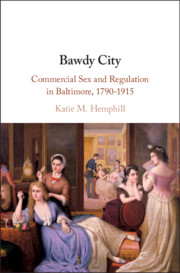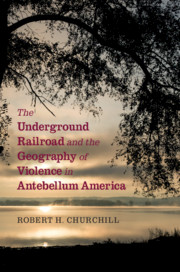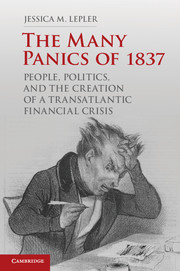Bawdy City
A vivid social history of Baltimore's prostitution trade and its evolution throughout the nineteenth century, Bawdy City centers women in a story of the relationship between sexuality, capitalism, and law. Beginning in the colonial period, prostitution was little more than a subsistence trade. However, by the 1840s, urban growth and changing patterns of household labor ushered in a booming brothel industry. The women who oversaw and labored within these brothels were economic agents surviving and thriving in an urban world hostile to their presence. With the rise of urban leisure industries and policing practices that spelled the end of sex establishments, the industry survived for only a few decades. Yet, even within this brief period, brothels and their residents altered the geographies, economy, and policies of Baltimore in profound ways. Hemphill's critical narrative of gender and labor shows how sexual commerce and debates over its regulation shaped an American city.
- Presents a history of capitalism that focuses on women's labor and its relationship to the broader urban economy
- Provides an overview of the sex trade's development
- Fills a significant gap in the historiography, allowing readers to broaden their ideas about who counted as an agent in economic development
Reviews & endorsements
'Katie M. Hemphill‘s superb book delivers both a big-picture arc, showing how economic forces shaped the market for commercial sex, and an amazing wealth of detail about transactional sex from brothels to beer gardens. She gives voice to sex workers and vice reformers alike, an impressive feat of archival research.' Patricia Cline Cohen, author of The Murder of Helen Jewett: The Life and Death of a Prostitute in Nineteenth-Century New York
'Skillfully answering the call for a gendered history of capitalism, Hemphill situates the sex trade in contentious struggles over real estate development, property rights, and class formation. Well written and carefully researched, Bawdy City keeps women at the center of the story, all the while revealing men’s power to extract wealth from sexual commerce.' Seth Rockman, Brown University, Rhode Island
‘… Hemphill’s meticulous archival research into court dockets, tax records, and almshouse admission books allows her to highlight the lives of prostitutes and madams. In the end, she convincingly shows how the labors of these otherwise forgotten women contributed to the development of Baltimore; at the same time we see vice pushed into African American communities.’ Jessica R. Pliley, The Metropole
Product details
June 2022Paperback
9781108733281
358 pages
228 × 151 × 20 mm
0.53kg
1 b/w illus. 3 maps
Available
Table of Contents
- Introduction
- Part I. The Rise of Prostitution in the Early Republic:
- 1. Selling sex in the early republic
- 2. The expansion of prostitution and the rise of the brothel
- 3. Brothel prostitution and antebellum urban commercial networks
- Part II. Regulating and Policing the Sex Trade:
- 4. Policing the expanding sex trade
- 5. 'Our patriotic friends': selling sex in the Civil War era
- 6. Prostitution, policing, and property rights in the Gilded Age
- Part III. Change and Decline in the Brothel Trade:
- 7. Black Baltimoreans and the bawdy trade
- 8. Rise of urban leisure and the decline of brothels
- 9. The end of an era
- Conclusion.





